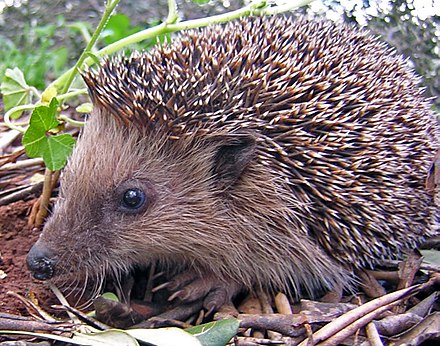Hedgehogs (scientific name: Erinaceidae) are small mammals that belong to the subfamily Hedgehog in nature. They are known for having the backs of their bodies covered in sharp spines, which they curl into a ball to expose these spines when threatened to protect themselves from predators.

Appearance: The most distinctive feature of a hedgehog is that its back is covered with spines, which are actually modified hairs. They are small in size, generally 20-30 centimeters in length, and can weigh from a few hundred grams to more than 1,000 grams.
Skin and spines: A hedgehog's spines can stand upright under the control of muscles. When a hedgehog encounters danger, special muscles will cause the spines to stand up and form a ball to defend against the enemy.
Face and Senses: Hedgehogs have very keen senses of smell and hearing, but weaker vision.
Food habits: Hedgehogs are omnivores and feed mainly on insects, but also eat worms, small molluscs, eggs, small vertebrates and certain plants.
Activity time: Some hedgehogs are nocturnal animals. They will hide in the grass or tree holes to rest during the day, and come out to look for food at night.
Lifestyle: Hedgehogs are usually solitary and only seek out a mate during the breeding season. They are very territorial and will be aggressive towards intruders.
Hibernation: In cold climates, hedgehogs hibernate. Before preparing to hibernate, hedgehogs eat enough food to store energy in the form of fat to survive the winter.
Breeding: Hedgehogs usually breed in late spring to early summer. Pregnancy period is usually 4 to 6 weeks.
Littering: A female hedgehog can give birth to 2 to 10 pups in a litter, but the number is usually 3 to 5.
Care: Pups are born limp and have soft spines. At approximately 4 to 6 weeks of age, the pups become independent and develop mature spines in a short period of time.
Habitat: Hedgehogs are widely distributed in Europe, Asia, Africa and New Zealand. Their habitats include forests, meadows, shrublands and gardens.
Adaptability: Hedgehogs adapt well to different environments, including human gardens and suburban areas.
Conservation status: Many hedgehog species have relatively stable populations, but some are threatened by habitat loss and road traffic.
Relationship with humans: Hedgehogs are generally viewed as beneficial animals because they can help control garden pest populations.
Although hedgehogs are generally harmless to humans and animals, in some areas, particularly where they were introduced as non-native species such as New Zealand, they can cause damage to native insects and small animals. However, due to their cute appearance, they are also kept as pets in some areas. If you keep hedgehogs, you need to pay special attention to their special diet and living habits, as well as their environmental temperature and humidity requirements.
animal tags: hedgehog
We created this article in conjunction with AI technology, then made sure it was fact-checked and edited by a Animals Top editor.